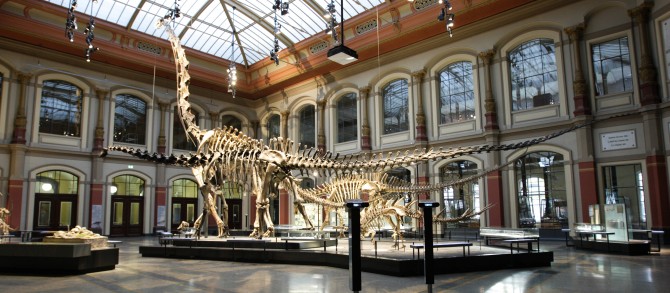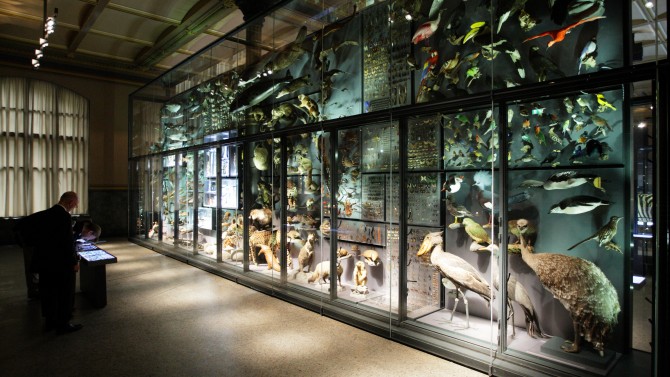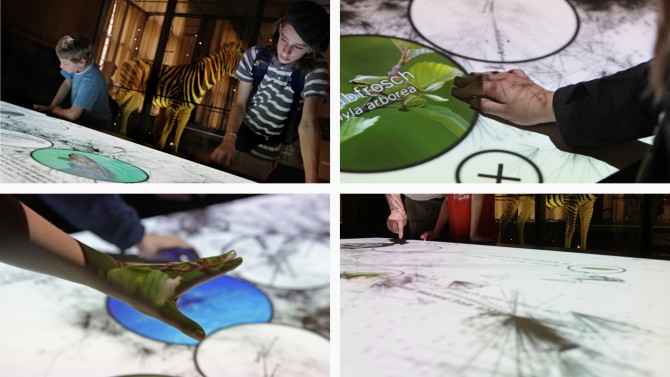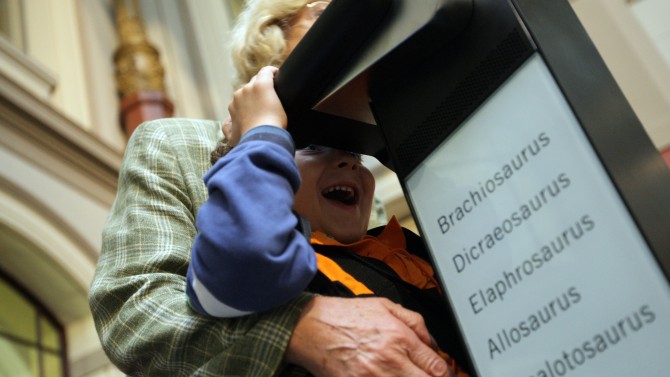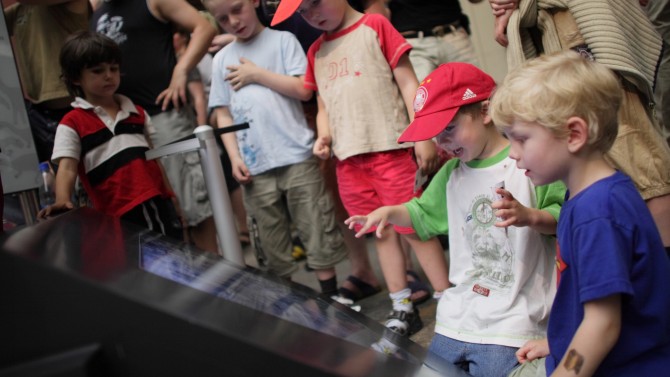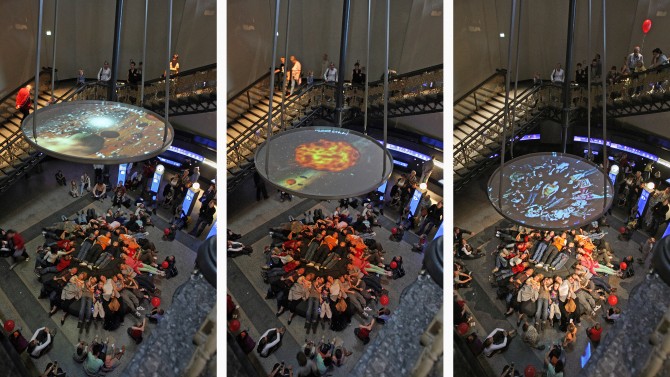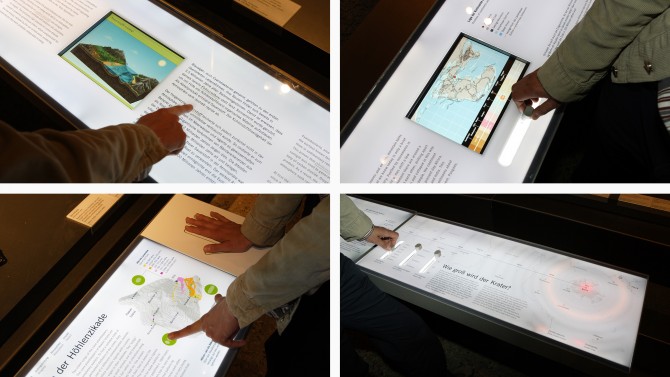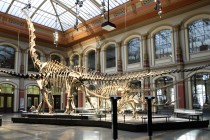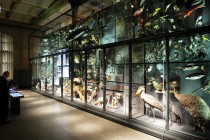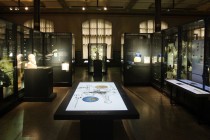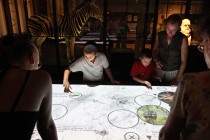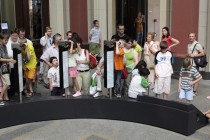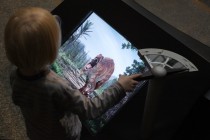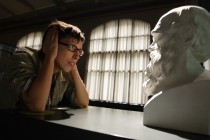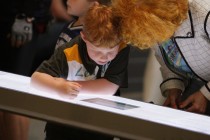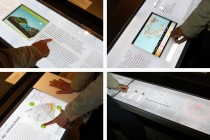Natural History Museum, 2007
Berlin, Germany
ART+COM had the overall direction for the redesign of four exhibition halls in the Museum of Natural History and the new media installations therein. Interactive installations run through the exhibition like a red thread, offering a playful and detailed access to the museum’s wealth of knowledge.
In the biggest hall of the redesigned area, visitors will find the „World in the upper Jurassic“ with seven big dinosaur skeletons and the original of Archaeopteryx lithographica. This is the location of seven Jurascopes. Looking through these medially augmented telescopes, the skeletons grow muscles and skin, then the dinosaurs are relocated to their natural habitat and begin to move in it.
In the following hall “System Earth”, processes that formed our planet’s appearance and still do so, are in the focus. The centre of this hall is a globe of three metres diameter. A large-scale screen moves around the globe and provides films with introductions to the hall’s different themes like vulcanism, speciation or plate tectonics.
A sofa in the museum’s staircase is the vehicle for the visitors’ journey through time and space with film and sound: the installation At Home in the Cosmos is comprised of a big round projection screen that has its starting position at the highest point of the staircase and will start slowly descending towards the visitors. The film projected onto it tells the story of the universe’s formation beginning with the Big Bang. The screen’s return journey starts on our earth and goes via the moon, the solar system and the Milky Way to the deeps of the cosmos.
The main theme in the last new hall is “Explore Evolution”. The interactive genealogical tree table allows just this. Visitors can choose from questions related to different families of animals or single species. When a visitor touches a question, an answer appears not only in textual form but also with images and films.
Dynamic Legends are the recurring means of communication in all the exhibition halls. They present detailed information on the exhibits that can be explored individually and depending on the visitor’s interest.
